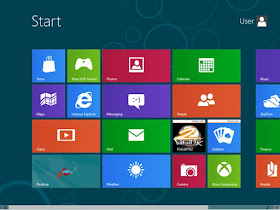Frustrated Senator Olympia Snowe Gives Obama an ‘F’If there were ever a Republican for President Obama to work with, it was Maine Senator Olympia Snowe. She was one of just three Republicans in the entire Congress to vote for his economic stimulus plan in 2009 and even tried to work with him on health care, but in an interview with ABC's Senior Political Correspondent Jonathan Karl, Snowe makes a remarkable revelation: She hasn't had a face-to-face meeting with President Obama in nearly two years.
Snowe said that if she had to grade the President on his willingness to work with Republicans, he would "be close to failing on that point." In fact, Snowe, who was first elected to Congress in 1978, claims that her meetings with President Obama have been less frequent than with any other President.
When she announced suddenly in February that she was not going to run for reelection - after three terms in the US Senate and a previous 14 years in the House of Representatives - colleagues and commentators alike were stunned.
"I think a lot of the frustration frankly in our party, in the Tea Party challenges or even Occupy Wall Street is really a reflection of our failure to solve the major problems in our country," said Snowe. "It's become all about the politics, and not the policy. It's not about governing, it's about the next election."
So has this Congress failed the country on those critical questions?
"Absolutely," Snowe asserted. "You have to sit down and talk to people with whom you disagree," said Snowe." And that is not what is transpiring at a time when we desperately need that type of leadership."
Sen. Snowe admitted that her party has changed since she entered politics, and that she is a rare moderate in the Republican caucus. That said, she is adamant that her core beliefs are as Republican now as they ever were.
"I haven't changed," she said. "I represent what I think is a traditional Republican… a limited government, fiscal responsibility, strong national defense, individual freedom and liberty."
THAT is the old-fashioned, traditional kind of New England Republicanism I admire. But sometimes it seems that nowadays, the GOP is being dominated by "Dixicrats", former Democrats who have made a conversion to Republicanism that is only skin-deep. They want to re-make the party into their own image, and "drum-out" anyone who won't conform to that image. Their favorite tool is the "RINO" label. It's enough to make Reagan turn over in his grave.
There is a video of the complete interview with Snowe at the link. She goes into more detail, such as how Ronald Reagan used to talk extensively and often with Tip O'Neil and other Democrats who opposed him, and how that was one of the things that made him a great president who was able to accomplish things.
When asked about wether she would support a candidate such as Santorum, if he is nominated, she said that, despite disagreeing with him on a number of issues, that of course she would support him if he's the candidate, because she's a Republican.
It's worth watching the whole interview, I was quite proud of her. I am so SICK of this talk about drumming RINOS out of the Party. A certain shrill, intolerant core of the Republican party wants to turn the GOP into the "Incredible Shrinking Party", drumming out divergent opinions with various "litmus tests". It's a loosing plan, given that the majority of voters are non-ideological swing voters, who are not particularly ideological. THEY will decide the election, not UBER Conservatives.
The GOP needs to build a coalition of various kinds of Republicans (like Reagan once did), and build a platform with planks that most of us can agree on, and that is also wide enough to accommodate and have appeal to swing voters.
I've always been willing to compromise with fellow Republicans with some different views than mine. And I have. The problem is, I seem to often be waiting for that consideration to be RECIPROCAL. Without it, there is no coalition. And no hope of winning enough to make a difference.


